TMJ is one of the most unpleasant injuries to deal with at night time. Any strain on your jaw, neck, shoulders, or face can worsen the pain and leave you sleepless. Restless nights affect your job performance, relationships, and quality of life. Finding the perfect TMJ sleeping position can help you eliminate pain, improve your daily life, and boost your productivity.
How Does Your Sleep Position Affect TMJ?
While it’s hard to prevent clenching or grinding your teeth while you’re deep asleep, the correct position can minimize the chances. Your sleep position affects how much stretch, strain, and pressure your shoulders, neck, and head suffer. It also determines the support your neck is getting. Ultimately, getting your sleep position right will not only reduce symptoms of TMJ pain but is great for your overall spine health.
Topics Explored
- How Does Your Sleep Position Affect TMJ? »
- Which Sleeping Position is Best? »
- Tips on How to Sleep with TMJ »
- FAQs »
Best TMJ Sleeping Position
If you’re constantly waking up with headaches, tension, and pain, your sleeping position is the main culprit. There’s a correct TMJ sleeping position for easing your symptoms. While it takes time to adjust to changing your sleep position, and you’ll feel the benefits after the first night.
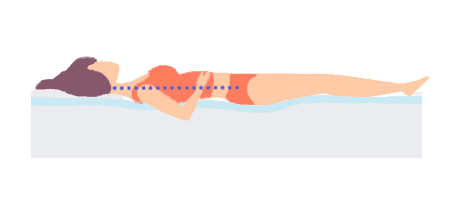
Back Sleeping: Best Position for TMJ
Sleeping on your back is ultimately the best TMJ sleeping position. It keeps your body in a neutral position, supports your shoulders, and doesn’t put any pressure on your jaw. You’re also less likely to clench or grind your teeth. According to Harvard Health, sleeping on your back is also best for those with neck pain, a common symptom of TMJ. You might find it hard to fall asleep on your back, but after a while, your body adapts.

Side Sleeping: Bad Position
Sleeping on your side is not the worst but far from a great TMJ sleeping position. And if you have the habit of tucking in your chin to chest, it’s even worse. Your neck and shoulders moves out of alignment throughout the night, worsening TMJ symptoms. This Danish study shows patients with shoulder pain are more likely to sleep on the affected side, linking side sleeping with shoulder pain. TMJ is often associated with upper trapezius, and shoulder muscle tenderness.

Stomach Sleeping: Worst Position
While you might find sleeping on your stomach cozy, it’s a sure way to flare up your TMJ symptoms. TMJ expert Dr. Carol Cunningham, states that pressure exerted on the face from stomach sleeping can torque your jaw and makes it easier to unconsciously clench and grind your teeth during the night. So the next time you’re thinking about sleeping on your stomach, just remember that it puts your whole body out of alignment and worsens TMJ.
Tips on How to Sleep with TMJ
Learning how to sleep with TMJ is the best thing you can do to prevent sleepless nights and pain in the morning. Back sleeping might seem like a hassle and hard to adjust to, but it’s a process worth undergoing to wake up rested and pain-free. While you’re slowly building up to that, here are 4 tips on how to sleep with TMJ no matter what your current sleep position is.
Tip 1: Support your head with a good TMJ pillow
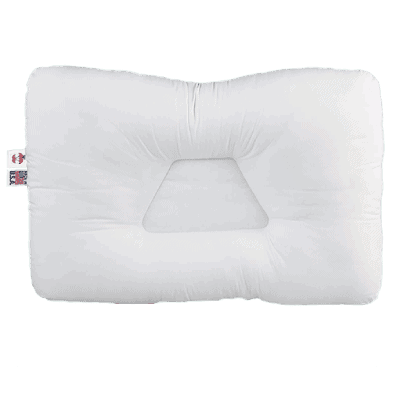
If there’s one reason why your TMJ sleeping position is sub-optimal, it’s probably your pillow! When dealing with TMJ, it’s best to keep your nose, chin, and neck in a straight line with your chest. But it’s impossible to control your movements while you sleep.
A specialized contoured pillow can help you by keeping you from turning your head in your sleep. TMJ pillows relieve the strain by keeping your neck and shoulder muscles relaxed.
Tip 2: Choose a mattress with good support
There’s not enough research pointing to a specific mattress choice as a cause for TMJ. But if you’re suffering from TMJ, the last thing you need is a sagging mattress that lack support.
If you’re dealing with tossing and turning connected with your TMJ, it’s best to look for a firm mattress with good support. A zoned mattress with variable layers that provide different levels of support for your neck, shoulders, and hips may help.
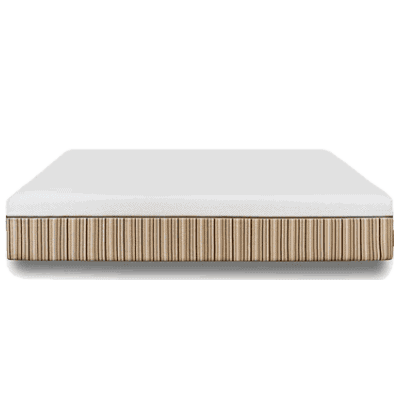
Tip 3: Move your arm to improve TMJ sleeping position
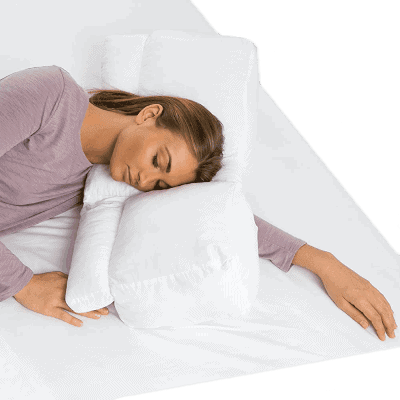
It’s important to watch where you’re placing your arms during the night. Even if you manage to sleep on your back, don’t place your arm over your head. It causes neck pain and tenses the jaw muscles.
If you’re side sleeping, put your arm under your head as a cushion. This can do so much to help align the spine and keep your chin from being tucked in.
Tip 4: Relieve stress before bed
Stress can lead to tension in your jaw muscles and a TMJ flare-up. Try to fit some light yoga into your pre-bed routine each night. According to Penn Medicine, the calming benefits of meditating can also work to diminish tension held in the jaw.
Breathing exercises can also help relieve some of the stress, reduce the tension in your muscles and help you sleep better. Practicing good sleep hygiene can set you on the right path to improving your TMJ symptoms!
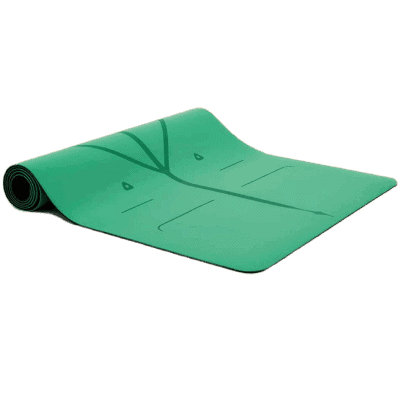
FAQs
What is the difference between TMJ & TMD?
The TMJ abbreviation refers to the Temporomandibular Joint that connects your jaw bone to the skull, and you have one on each side of your jaw. TMD is Temporomandibular Joint Disorder that applies to all disorders caused by inflammation or misalignment of the TMJs. Simply put, we all have TMJs, but not everyone has TMD.
Why is TMJ worse at night?
At night the stress of the day catches up, leading to uncontrollable jaw clenching and teeth grinding while you sleep. Your body also struggles to keep your airways open, which can lead to clenching. Your TMJ is worse at night because of your inability to control your actions during the deep sleep phase. All of these factors lead to a poor TMJ sleeping position which further worsens your symptoms.